Satisfy your game day taste buds with these Korean Fried Chicken. This recipe calls for a double round of deep-frying deliciousness with a toss of a mouthwatering sweet and spicy sauce. The additively sticky, crunchy coating will have you licking your fingers after every bite.
Korean Fried Chicken
Tom Jackson
Rated 3.9 stars by 14 users
Category
Poultry
Cuisine
Korean
Servings
6
Prep Time
20 minutes
Cook Time
20 minutes
Calories
447
It’s no secret this Korean Fried Chicken is finger-licking delicious. These wings involve a two-step deep frying process giving them the ultimate extra crispiness. Then they are coated with a sticky-licious sweet and spicy sauce. The addictively crunchy and a must-have for watching the game.
Ingredients
- 3 lb chicken wings
-
1 tbsp Cattleman’s Grill Lone Star Brisket Rub
- 1 tbsp fresh ginger, finely grated on the microplane
- 1 cup cornstarch
- 1 tbsp baking soda
-
1 tbsp Colonial Chile Oil, mostly oil
- 2 tbsp garlic, minced
- 1/4 cup kimchi, minced
- 1/4 cup gochujang
-
1/4 cup Hoff’s Smoken Ghost Ketchup
- 2 tbsp Tamari soy sauce
-
2 tbsp Noble Saltworks Maple Smoked Turbinado Sugar
-
1 tbsp Reida Farm Wildflower Kansas Honey
- 1 tbsp rice vinegar
Chicken:
Dredge:
Sauce:
Directions
- Combine the wings, one tablespoon Cattleman’s Grill Lone Star Brisket Rub and one tablespoon fresh ginger in a mixing bowl. Toss well to coat the wings evenly. Cover the bowl with a towel and transfer to the refrigerator. Let sit 8 hours to overnight.

- Place a Lodge 7 Quart Dutch Oven on the base/burner of a Bayou Classic gas burner/turkey fryer. Add about one gallon of frying oil to the dutch oven. Bring the oil temperature up to 300ºF.
- Combine the cornstarch and baking soda in a large bowl and whisk to combine. Add the wings to the bowl and toss to coat in the dredge.
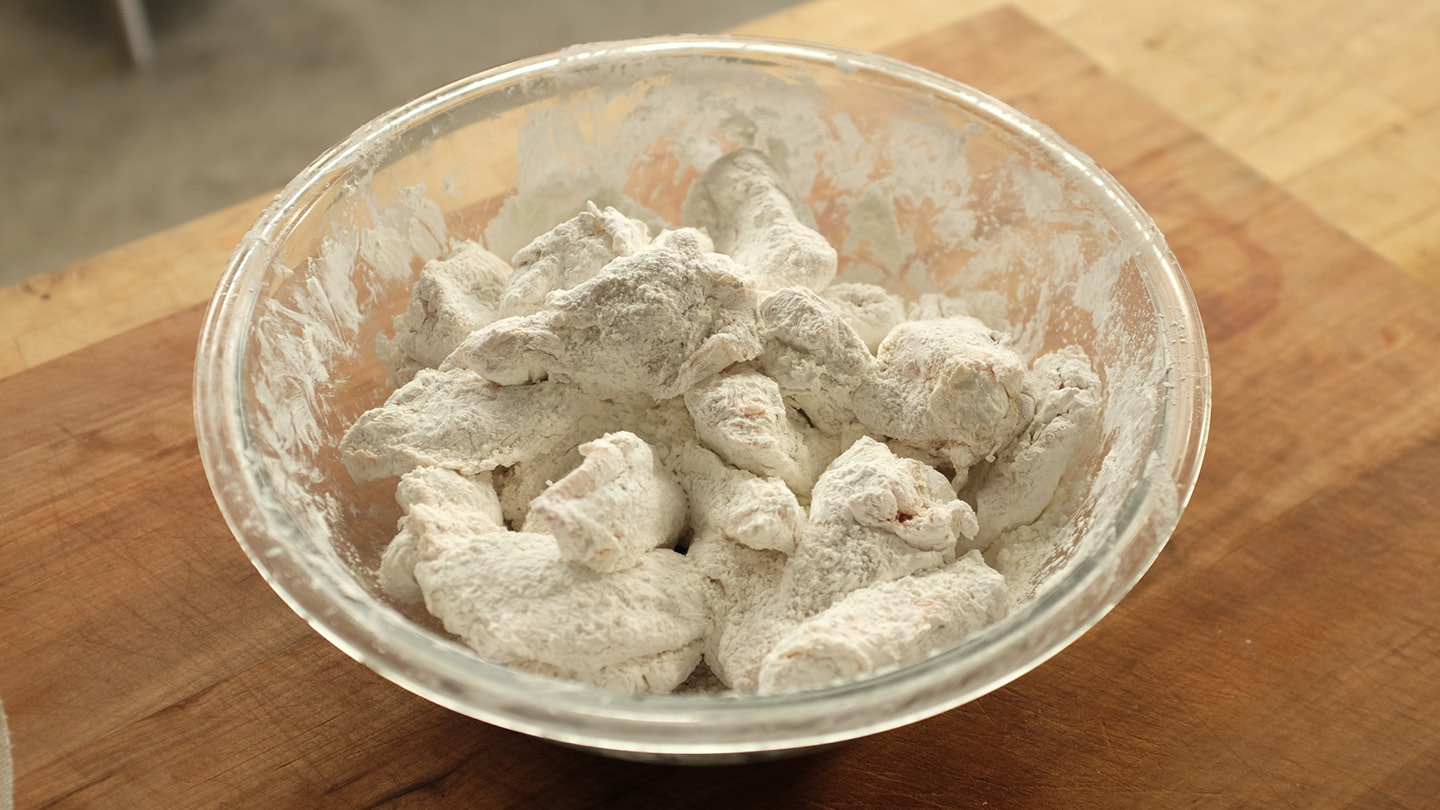
- Place the wings in a Lodge Frying Basket. Carefully lower the basket into the hot oil. The temperature will drop when you add the wings. Increase the flame on the burner to maintain a 275ºF-300ºF oil temperature.

- Fry the wings until cooked through (165ºF internal), about 9 minutes. Remove the fry basket full of wings from the oil and set aside (on the lip of the dutch oven or over a sheet pan).
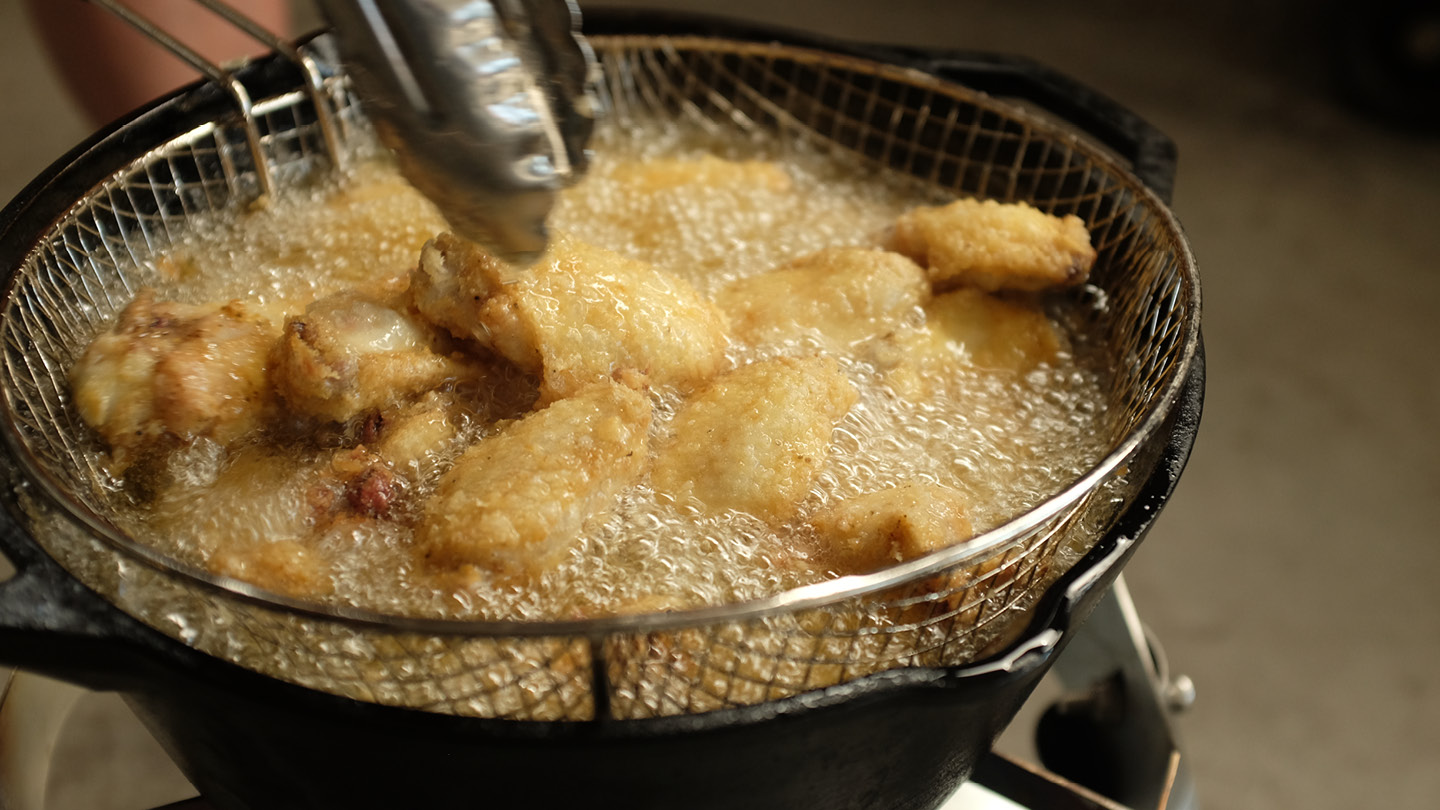
- Increase the flame on the burner and bring the oil temperature up to 375ºF, then adjust the flame to maintain 375ºF.
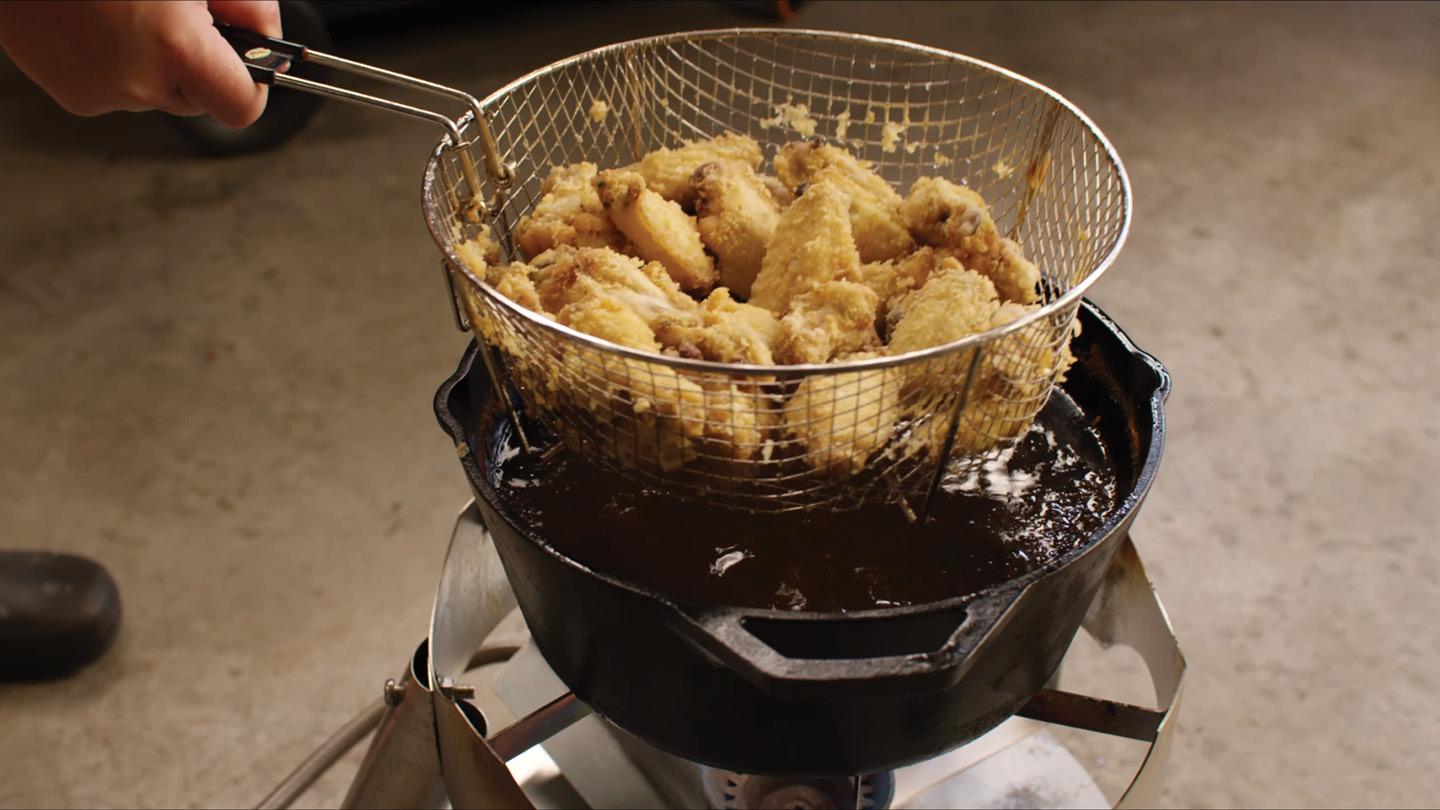
- While the oil comes up to temperature, you can make the sauce (on the stove top or in a grill, but don’t leave your oil unattended).
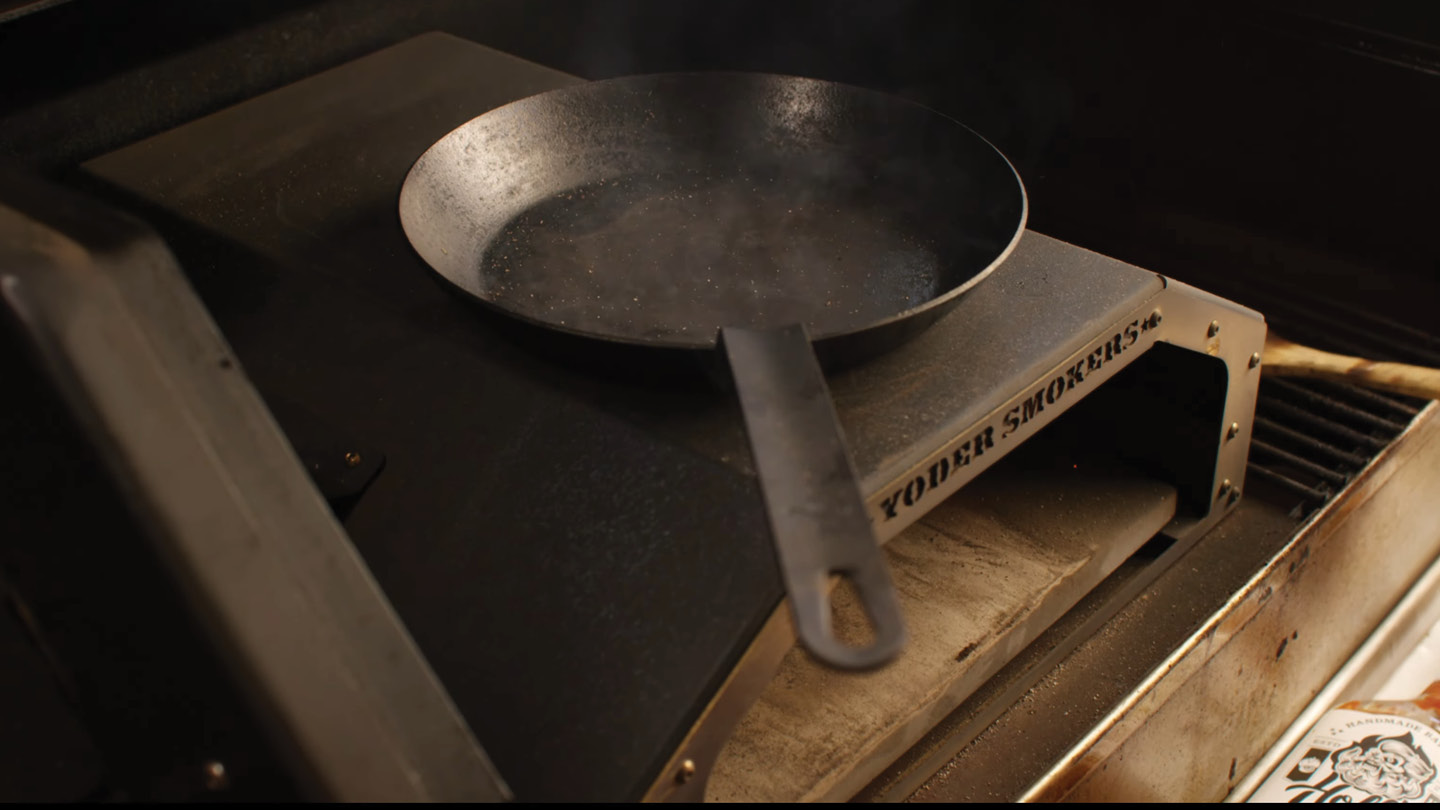
- Over medium heat, add the Colonial Chile Oil to a Lodge 10” Steel Skillet. When the oil is hot, add the garlic and fry until it begins to brown slightly, about 1-2 minutes. Add the kimchi and cook briefly (one minute), then add the remaining ingredients. Bring to a simmer. Cook to thicken slightly, then turn off the heat. Place a lid on the skillet to keep warm.
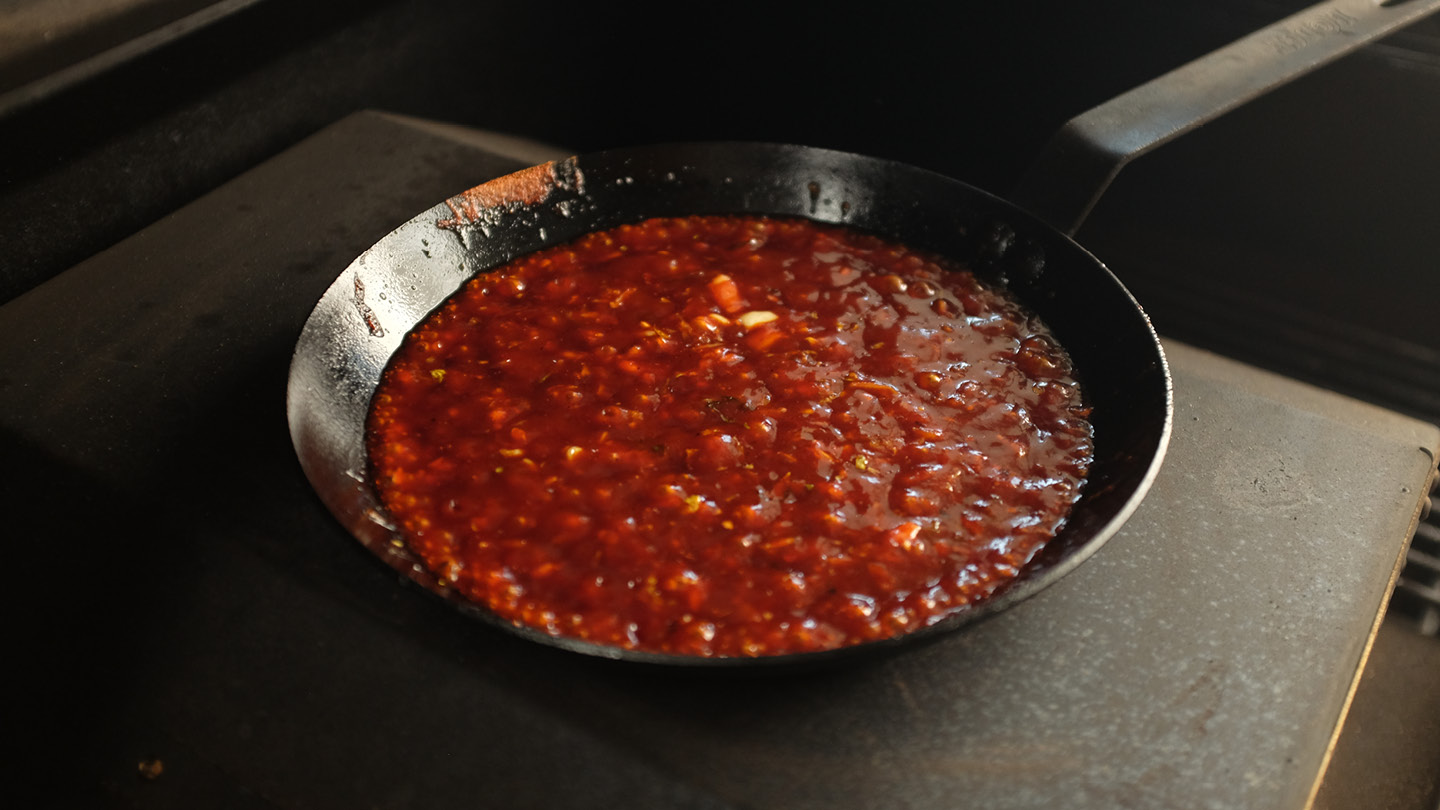
- For the second fry, return the basket full of wings to the frying oil, slowly and carefully. The oil is hotter now, so you’ll get a more dramatic reaction from the oil. Careful not to overflow the dutch oven.
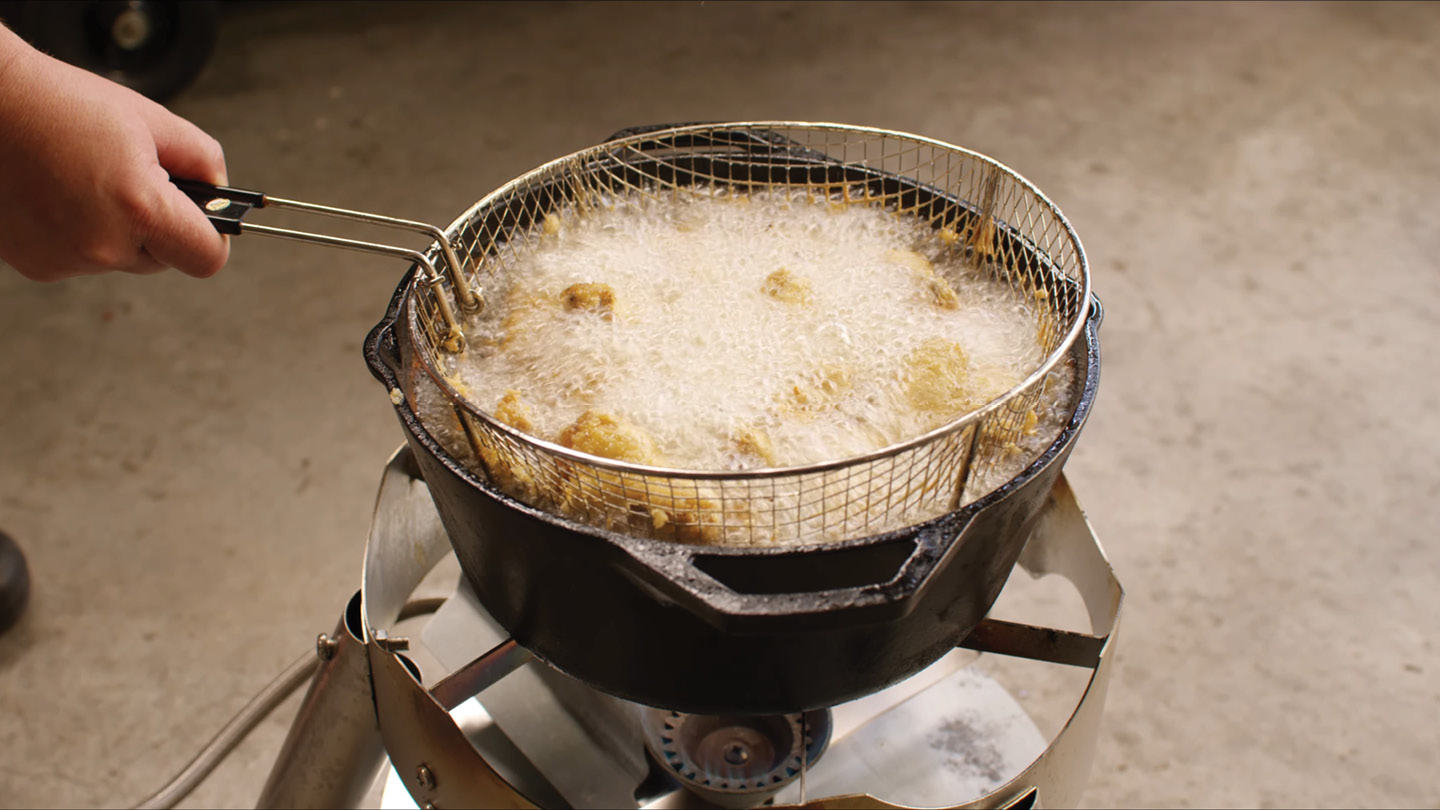
- The temperature of the oil will likely drop to 350ºF initially. Increase the flame as needed to maintain an oil temperature of 350ºF-375ºF. Fry until dark golden brown, about 3 minutes.
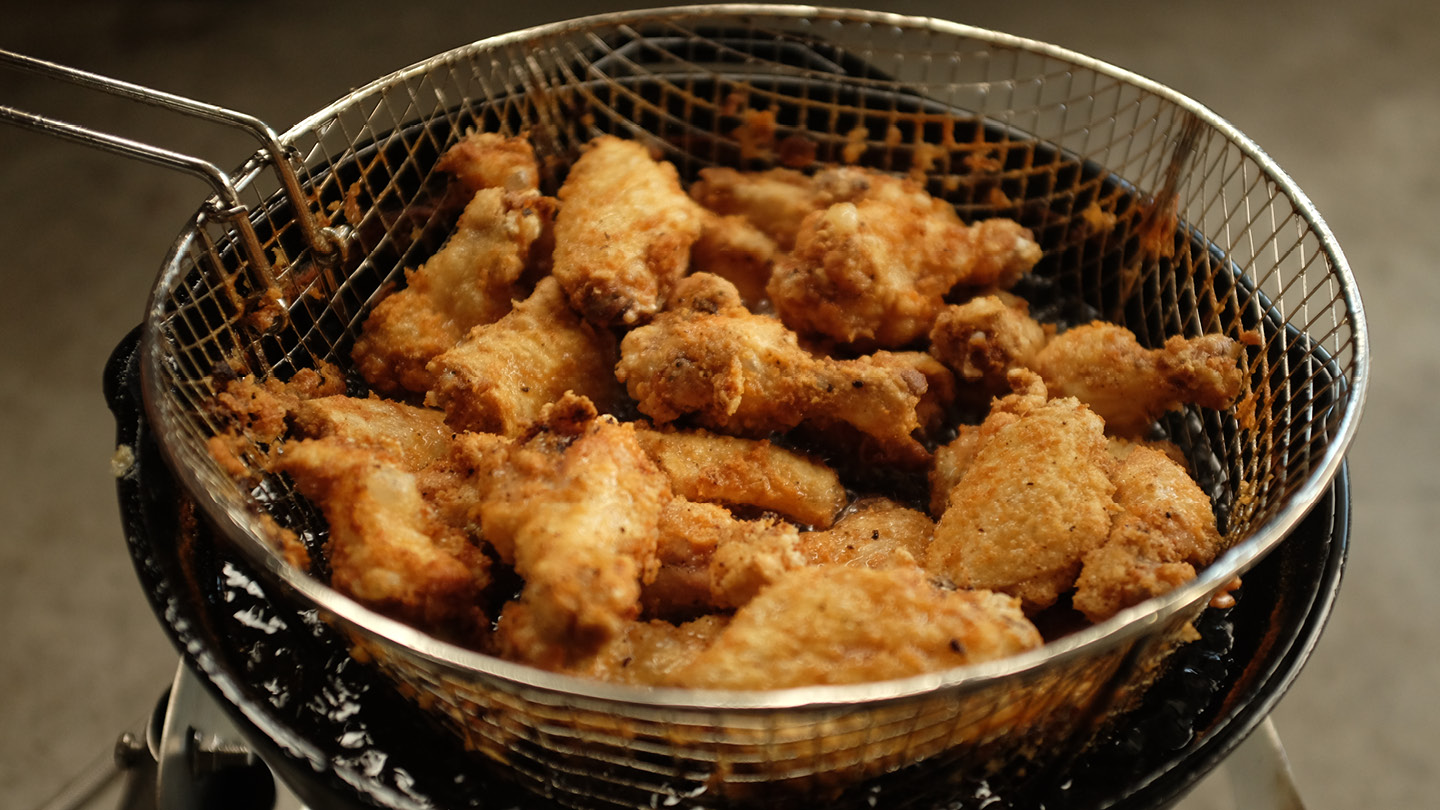
- Remove the fry basket from the oil and the wings from the fry basket. Place them in a large sized mixing bowl and pour the warm sauce over the top. Toss to coat the wings. Serve topped with sesame seeds and thin sliced green onions.

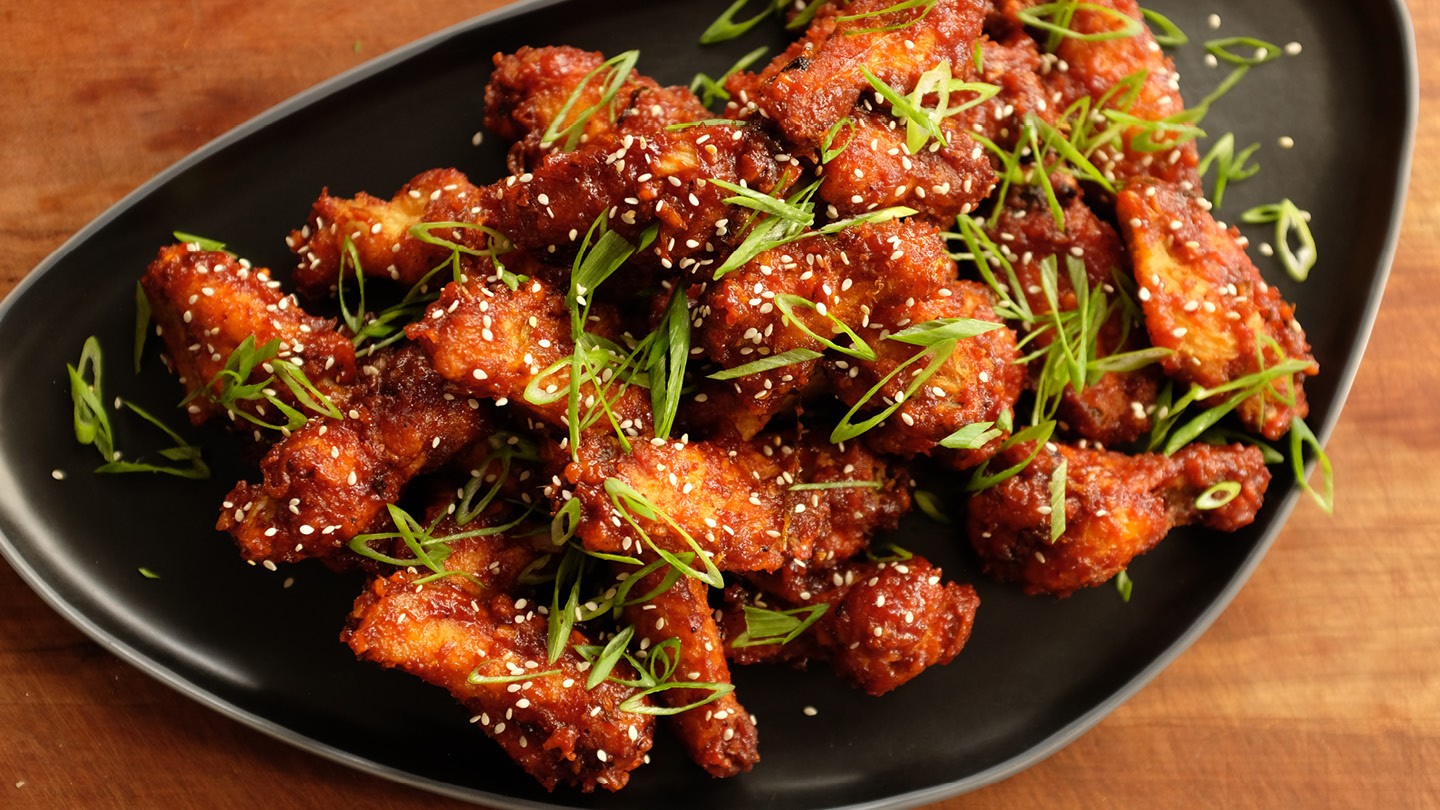
Recipe Note
Other Recipes You Might Enjoy:
Korean Buffalo Wings with Kimchi Ranch
Recipe Highlights and Insights:
What is dredge?
Dredge is the process of lightly coating food with dry ingredients such as flour, cornstarch, cornmeal, or breadcrumbs. The act od dredging creates a barrier to prevent the food from sticking to your cookware. Dredging meats before sauteing, pan frying, or deep frying, helps to give them an appetizing brown color and a craveable crispy texture.
What is the difference between dredging and breading?
The basis of these two culinary techniques is that they both will coat the food with a dry ingredient. However, the difference is with breading the food item is also moistened with a liquid base such as egg or milk. While they serve similar purposes there are other differences. The primary purpose of dredging is to create a light and even coating on the food. This helps to absorb moisture and promotes browning of the food. The primary purpose of breading involves making the coating thicker with a multi-layer coating of a dry ingredient and a liquid adhesive.
What is viscosity in cooking?
Understanding and being able to manipulate viscosity is important to know when it comes to mastering culinary arts. Viscosity in cooking refers to the thickness or consistency of a liquid or semi-liquid substance such as gravy, sauce, or batter. It plays a vital role that affects the ease of how the substance flows. It’s the internal friction of a liquid and it’s the ability to resist flow. This is how chefs are able to attain the desired textures of their dishes. There are a few things to consider when cooking to your desired consistency: what are your thickening agents, the temperature you set on your stovetop, and how long you are stirring and cooking.
Tips to achieve extra crispy when cooking
Double Fry – Fry your food twice, once at a low temperature and a second time at a high temperature.Dry your food – Pat dry with a paper towel as moisture can create steam and soften your dish.Cornstarch or potato starch – These dry ingredients add extra crispiness more than other dry ingredientsDouble breading – After the initial coating dip and seal with an egg wash, and dip the food back into your dry ingredients mixture.Chill – After coating your food, set it back in the fridge and let is refrigerate for 15-30 minutes before frying. This helps to set the coating, resulting in a crispier texture.Avoid overcrowding – don’t overcrowd your pan or deep fryer, this can lead to a soggy crust.
Nutrition
Nutrition
- Serving Size
- 3 wings
- per serving
- Calories
- 447
- Fat
- 27 grams
- Saturated Fat
- 6 grams
- Cholesterol
- 309 milligrams
- Sodium
- 336 milligrams
- Carbs
- 4.5 grams
- Fiber
- 0 grams
- Sugar
- 3 grams
- Protein
- 44.4 grams